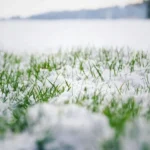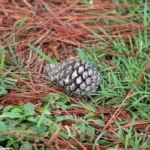Have you ever planted grass seeds, only to find that they never sprouted or didn’t grow as lush and green as you’d hoped? The secret to a thriving lawn might be something as simple as peat moss. This incredible natural material could be just what your grass seeds need to germinate successfully and grow robustly. In this article, we’ll demystify peat moss, explaining what it is, why it’s beneficial for grass seeds, and most importantly, how much to use for optimal results.
- 3 Cubic Foot sphagnum peat moss
- Perfect for organic growing
- Maximizes water retention
- Suited for indoor and outdoor horticultural applications
What is Peat Moss?
Peat moss, also known as sphagnum moss, is a type of moss that grows in damp, acidic environments like bogs and marshes. Over thousands of years, layers of this moss accumulate and decompose to form peat. This peat is then harvested, dried, and sold as peat moss.
Why is this moss so amazing for your garden, you ask? Peat moss has some unique properties that make it a gardener’s best friend. It’s incredibly absorbent, soaking up to 20 times its weight in water. This means it can keep your soil moist, which is crucial for grass seed germination. Plus, peat moss is slightly acidic, which helps create a soil environment that’s perfect for grass to thrive.
But how much peat moss should you use to cover your grass seeds? Let’s dive in and find out!
Why Use Peat Moss for Grass Seeds?
When it comes to growing a lush, green lawn, peat moss is like a secret superpower. Firstly, it’s great at holding onto water. This means that when you water your grass seeds, the peat moss will keep the soil moist for longer. As a result, your seeds are less likely to dry out and more likely to sprout into beautiful grass.
Secondly, peat moss helps to improve the structure of the soil. It makes heavy clay soils lighter and easier for grass roots to penetrate, and it helps sandy soils retain more water.
Lastly, peat moss also protects the seeds. When spread over freshly planted grass seeds, peat moss acts like a protective blanket. It shields the seeds from hungry birds, prevents them from being blown away by the wind, and keeps them from washing away during heavy rain.
How Much Peat Moss to Use?
Now that we know why peat moss is beneficial, let’s talk about how much to use. The rule of thumb is to cover your grass seeds with a thin layer of peat moss, about 1/4 inch thick. This is just enough to reap all the benefits of peat moss without suffocating your seeds.
To visualize it, if you have a 1,000 square foot area to seed, you would need roughly 1 cubic yard of peat moss. Remember, the goal is to lightly cover the seeds, not bury them completely.
Stick with this guideline, and you’ll be well on your way to a thriving, green lawn. But how exactly do you apply this magical moss? Let’s get into that next.
How to Apply Peat Moss Over Grass Seed
Applying peat moss is a breeze. Once you’ve evenly spread your grass seeds over your lawn, take handfuls of peat moss and gently scatter it over the area. Try to get a nice, even layer that’s about 1/4 inch thick. You can use a lawn spreader to make the job easier and to ensure even distribution. After you’ve spread the peat moss, water the area thoroughly. This will help the peat moss to settle and start working its magic on your seeds.
- Grow grass anywhere, guaranteed (subject to proper care) with this revolutionary seeding mix
- Grass seed: Scotts best high performance seed; Mulch: absorbs 6X its weight in water and expands to surround the seed in a moist protective layer
- Fertilizer: Exclusive controlled release technology feeds seedlings to jumpstart growth
- Tackifier: Helps keep seed from washing away; Protectant: Helps keep seedlings safe from harmful diseases that can attack newly planted areas
- Grows in full sun and dense shade, high traffic areas and on slopes; seeds up to 225 sq. ft
Precautions When Using Peat Moss
While peat moss is a fantastic aid for grass seed growth, there are a few things you need to keep in mind. Peat moss can be dusty, so it’s a good idea to wet it slightly before using it. This makes it easier to handle and reduces the amount of dust. Remember, peat moss is acidic, so if your soil is already acidic, you might want to test your soil’s pH before adding too much.
Lastly, be mindful of the environment. Peat moss is a natural resource that takes thousands of years to form. So, use it sparingly and consider combining it with other organic matter like compost or manure to lessen the environmental impact.
Conclusion
Peat moss is like a secret ingredient to a luscious, green lawn. It offers a buffet of benefits, from retaining moisture to improving soil structure, making it an invaluable tool in your gardening arsenal. Remember, the trick is to apply a thin layer — just enough to cover the grass seeds. With peat moss on your team, your grass seeds are sure to sprout successfully and your lawn will be the talk of the neighborhood.






